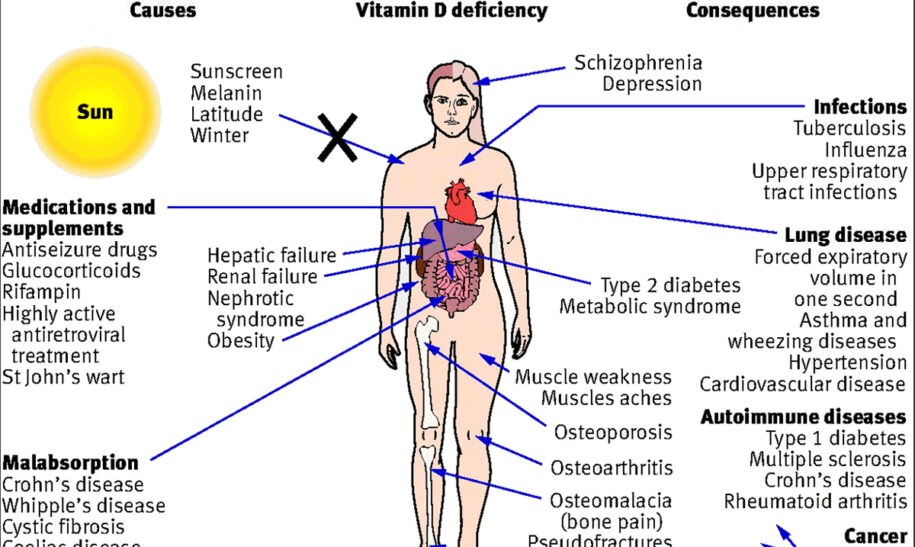
15 Cancer Symptoms Women Often Ignore
Cancer has become more common than ever! Studies show that women often ignore these common indicators of cancer!
In 2016, an estimated 1,685,210 new cases of cancer will be diagnosed in the United States and 595,690 people will die from the disease. The most common cancers in 2016 are projected to be breast cancer, lung and bronchus cancer, prostate cancer, colon and rectum cancer, bladder cancer, melanoma of the skin, non-Hodgkin lymphoma, thyroid cancer, kidney and renal pelvis cancer, leukemia, endometrial cancer, and pancreatic cancer.
Some of the cancers that most often affect women are breast, colon, endometrial, lung, cervical, skin, and ovarian cancers. Knowing about these cancers and what you can do to help prevent them or find them early (when they are small and easier to treat) may help save your life. Breast cancer is the most common cancer that women may face in their lifetime (except for skin cancer). It can occur at any age, but the risk goes up as you get older. Because of certain factors, some women may have a greater chance of having breast cancer than others. But every woman should know about breast cancer and what can be done about it.
Women’s bodies change all the time. Women experience many different stages of growth in their bodies, but sometimes your body can take an unnatural path. Women should be well aware of the warning signs of cancer. Many women will have early warning signs of cancer. Being able to recognize early warning signs of cancer might be able to save a life! It is important to stay informed, so here are 15 early warning signs of cancer that women shouldn’t ignore.
Breast Changes
Most breast lumps aren’t cancer, but your doctor should always check them. Let her know about changes such as skin dimpling, skin puckering, nippes that turn inward, nipple discharge, or redness and scaling of the nipple or breast skin.
Bloating
Marleen Meyers, MD, an oncologist at NYU Langone Medical Center says that women are natural bloaters. But she also says that If your symptoms don’t get better with time, or if they happen with weight loss or bleeding, see a doctor. Constant bloating can sometimes mean ovarian cancer. You’ll have a pelvic exam as well as blood tests, and sometimes an ultrasound.
Between-Period Bleeding
If you’re still getting periods, tell your doctor if you’re spotting them. Bleeding that’s not a part of your usual monthly cycle can have many causes, but your doctor will want to rule out endometrial cancer (cancer of the lining of your uterus).
Skin Changes
A change in the size, shape, or color of a mole or other spot is a common sign of skin cancer. See your doctor for a thorough exam and perhaps a biopsy. This is one time you don’t want to wait, Meyers says.
Blood in Urine or Stool
Talk to your doctor if you’re bleeding from a part of your body that normally doesn’t, especially if the bleeding lasts more than a day or two, Meyers says. Bloody stool is often from hemorrhoids, but it can also be a symptom of colon cancer. Bloody urine is usually the first sign of cancer of the bladder or kidneys, says Herbert Lepor, MD, a urologist at NYU’s Langone.
Lymph Node Changes
Lymph nodes are small, bean-shaped glands around the body. Most changes in them come from common infections. But some cancers, including leukemia and lymphoma, can also cause lymph nodes to swell. It’s a good idea to see your doctor if you have a lump or swelling anywhere in your body that lasts a month or more, Meyers says.
Trouble Swallowing
Occasional trouble swallowing is nothing to worry about. But when it happens often, especially with vomiting or weight loss, your doctor may want to check you for throat or stomach cancer.
Random Weight Loss
Most unintended weight loss is not cancer, Meyers says. “It’s often caused by stress or your thyroid, but it can be a sign of pancreatic cancer,” she says. Stomach and lung cancers are also possible. Your doctor may ask for a lot of tests to look for a problem, including blood tests and imaging tests, like a CT scan.
Heartburn
Too much food, alcohol, or stress (or all three) can cause serious heartburn. Meyers suggests that you change your diet for a week or two to see if your symptoms get better.
Mouth Changes
If you smoke, watch for white or bright-red patches inside your mouth or on your lips. Both can signal oral cancer. Ask your doctor or dentist about tests and treatment.
Fever
A fever that doesn’t go away and can’t be explained could mean leukemia or another blood cancer. Your doctor should get the details of your medical history and give you a physical exam to check for the cause.
Fatigue
Talk to your doctor if your fatigue never gets better or if you have other symptoms, like blood in your stool. Your doctor will ask for your complete medical history and give you blood tests.
Change in Urination
Urinary symptoms can include frequent urination, small amounts of urine, and slow urine flow or a general change in bladder function. These symptoms can be caused by urinary infections (usually in women) or, in men, by an enlarged prostate gland.
Unexplained Pain
Pain can be a result of numerous conditions, but ongoing pain which is unexplained and lasts a month or longer can signal bone, brain, or other cancers. Ask your doctor about any suspicious prolonged and unexplained pain.
Coughing
This is probably one of the most mundane and diverse symptoms on the list. There are a ton of different reasons that people cough, and more often than not they are trivial and temporary in nature. It’s when the cough persists over the course of weeks that someone should voice concern.
If you find yourself in pain or short of breath during a cough it could be serious. If you cough up blood, it is serious. Smokers should pay particular attention to coughing, as it’s the most typical sign of lung cancer.














